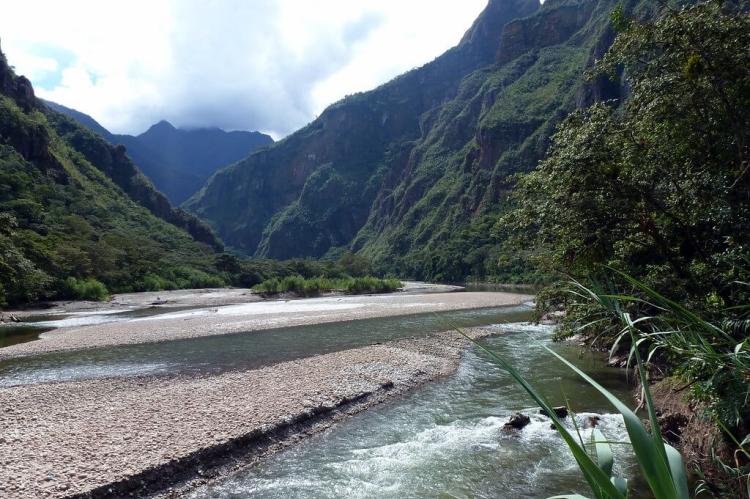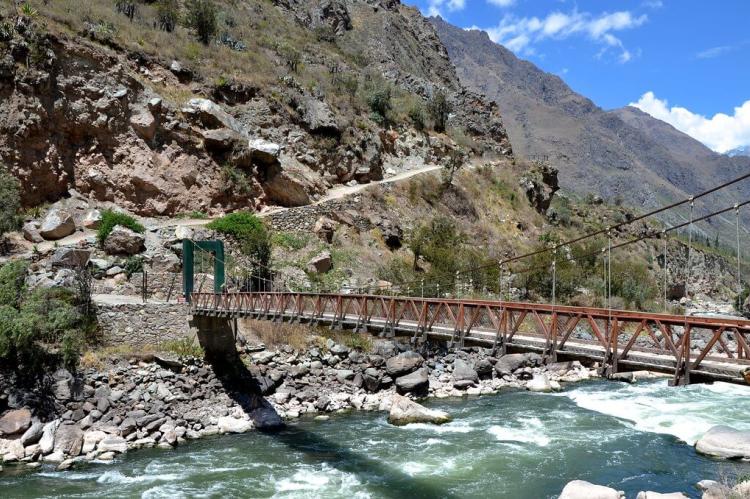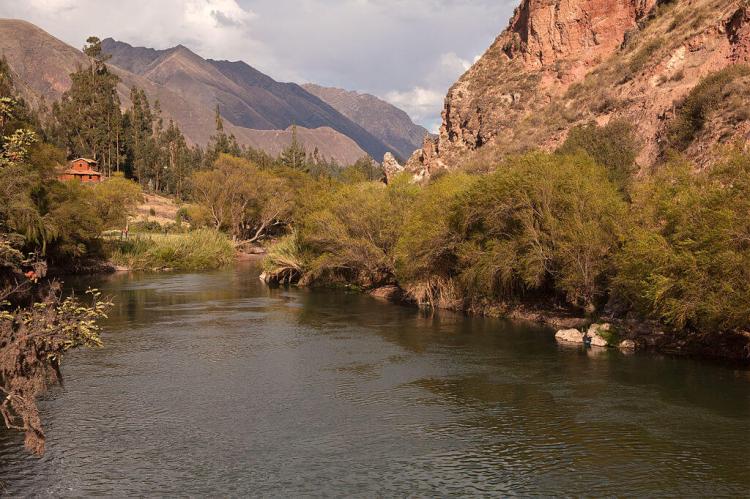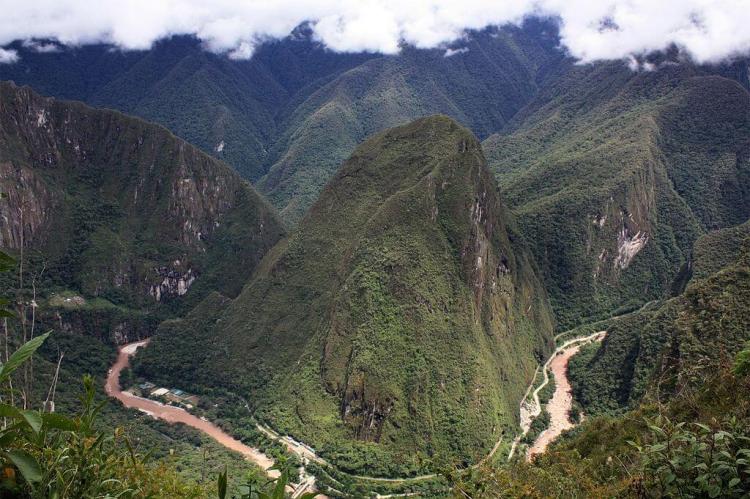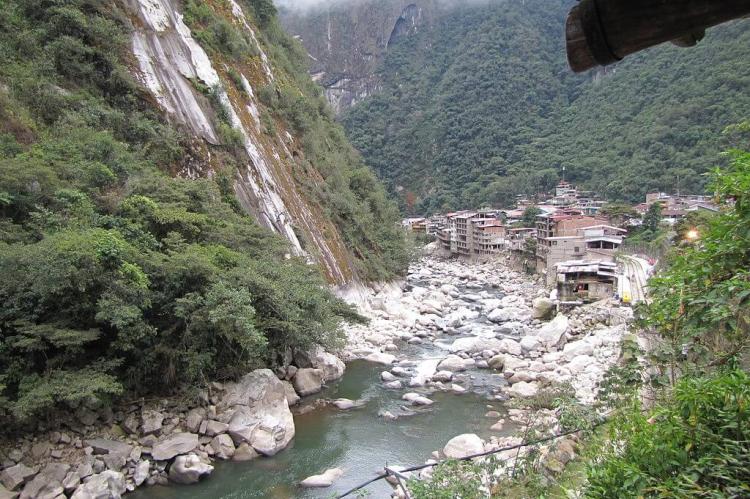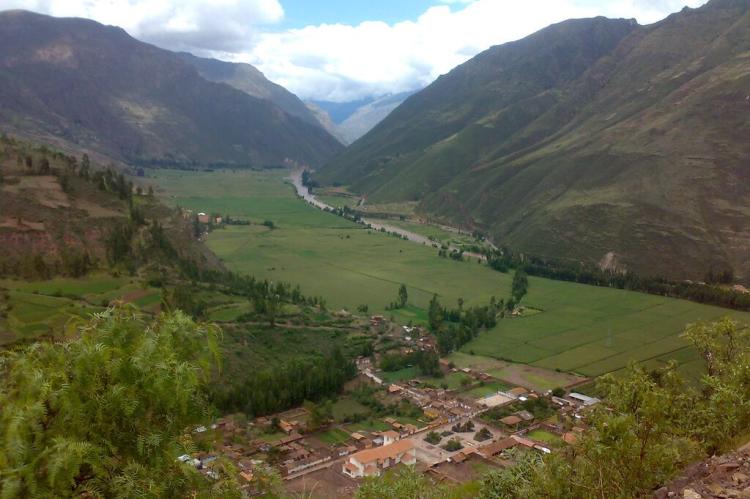Exploring the Enigmatic Urubamba River: Lifeline of the Peruvian Andes
The Urubamba River flows gracefully through the rugged heart of the Peruvian Andes and emerges as a lifeline of unparalleled significance. As a vital artery of life, the Urubamba River has played a central role in shaping Peru's cultural, economic, and ecological fabric of Peru.
Exploring the Enigmatic Urubamba River: Lifeline of the Peruvian Andes
Flowing gracefully through the rugged heart of the Peruvian Andes, the Urubamba River emerges as a lifeline of unparalleled significance—a testament to the power of nature and the resilience of indigenous cultures. Its meandering course, carved over millennia, not only shapes the landscape but also sustains the surrounding region's rich biodiversity and agricultural productivity. As a vital artery of life, the Urubamba River has played a central role in shaping Peru's cultural, economic, and ecological fabric, leaving an indelible mark on the hearts and minds of those who call its shores home.
The Geography of the Urubamba River: Nature's Masterpiece
The Urubamba River, known as the Vilcanota River upstream, carves a winding path northward through the rugged terrain of the Andes, unveiling the natural wonders and geological marvels along its course. Rising from the snow-capped peaks of the Vilcanota Mountain Range, the river cascades downward with crystalline waters, carving deep gorges and fertile valleys as it meanders toward the Amazon Basin.
Stretching approximately 724 kilometers (450 miles) in length before joining with the Tambo River to form the Ucayali River, the Urubamba River traverses a diverse range of ecosystems, from high-altitude alpine meadows to lush tropical rainforests. Its upper reaches, fed by glacial meltwaters and mountain streams, provide a vital source of fresh water for the surrounding landscape and sustain a rich variety of flora and fauna adapted to the harsh conditions of the Andean highlands.
As the river descends into the Sacred Valley of the Incas, its waters take on a new significance, nourishing the fertile soil and sustaining the agricultural livelihoods of indigenous communities. Here, amidst the green expanse of terraced fields and meandering riverside villages, the Urubamba River serves as a lifeline for local farmers, providing irrigation for crops such as maize, potatoes, and quinoa. The valley's unique microclimate, shaped by the river's presence, supports various crops and agricultural practices, reflecting the ingenuity and resourcefulness of Andean cultures.
Moreover, the Urubamba River plays a crucial role in shaping the landscape and biodiversity of the region. Its meandering course through the Andean foothills creates a mosaic of habitats, ranging from pristine mountain streams to expansive wetlands teeming with aquatic life. Along its banks, towering stands of native vegetation provide refuge for endemic species of flora and fauna. At the same time, its swift currents support a thriving population of freshwater fish and migratory birds.
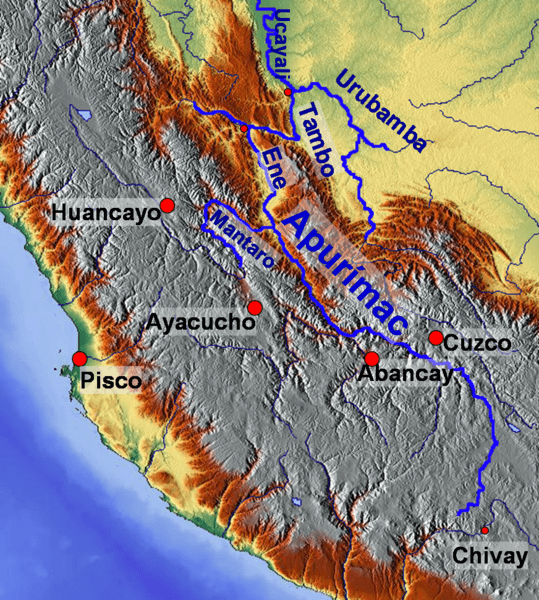
Relief map of central Peru.
Historical Significance: The Legacy of the Incas
For millennia, the Urubamba River has served as a lifeline for the indigenous peoples of the Andes, shaping the course of human history and cultural development in the region. Among the most renowned civilizations to inhabit its fertile shores were the Incas, whose empire flourished amidst the verdant valleys of the Sacred Valley.
The Urubamba River held profound spiritual significance for the Incas. It symbolized the sacred union between earth and water, a source of life and sustenance that sustained their civilization for centuries. Along its banks, the Incas constructed a network of agricultural terraces and irrigation channels, harnessing the river's power to cultivate maize, potatoes, and other staple crops essential to survival.
But perhaps the most enduring legacy of the Incas along the Urubamba River is the iconic citadel of Machu Picchu, perched atop a rugged mountain ridge overlooking the valley below. Built in the 15th century as a royal estate and spiritual sanctuary, Machu Picchu stands as a testament to the ingenuity and architectural prowess of the Inca civilization—a timeless monument to the enduring bond between human culture and the natural world.
Furthermore, the Urubamba River served as a vital transportation route for the Incas, facilitating trade and communication between distant regions of their empire. Along its banks, ancient Inca roads and pathways crisscrossed the landscape, connecting remote villages and mountain settlements to the bustling markets and administrative centers of the Sacred Valley. These trade networks fostered economic exchange and facilitated the spread of ideas, technologies, and cultural practices, contributing to the rich tapestry of Andean civilization.
Moreover, the Urubamba River played a central role in the religious rituals and ceremonies of the Incas, who revered it as a sacred deity and protector of their lands. Temples and shrines dedicated to the river god Pachamama adorned its shores, where offerings of gold, silver, and precious jewels were made in homage to its divine power. These spiritual traditions endured long after the fall of the Inca Empire, continuing to shape the cultural identity of indigenous communities along the Urubamba River to this day.
Cultural Significance: A Living Heritage
Today, the Urubamba River continues to hold profound cultural significance for the people of Peru, serving as a vital source of inspiration and sustenance for indigenous communities along its shores. From the traditional farming practices of Quechua-speaking villagers to the vibrant festivals and rituals celebrating the river's bounty, the Urubamba remains a focal point of Andean identity and heritage.
In the bustling market towns of the Sacred Valley, the rhythms of daily life are intertwined with the river's ebb and flow, shaping the traditions and customs of generations past and present. The intricate relationship between the river and local communities is evident in the agricultural practices that have sustained livelihoods for centuries. The terraced fields that cling to the valley slopes, meticulously cultivated by hand, are a testament to the ingenuity and resourcefulness of Andean farmers who have adapted to the challenges of their environment.
Moreover, the Urubamba River serves as a conduit for cultural exchange and interaction among diverse ethnic groups in the region. Along its banks, indigenous artisans gather to showcase their craftsmanship, weaving vibrant textiles and crafting intricate pottery inspired by the river's swirling currents and abundant wildlife. These artistic traditions, passed down through generations, reflect the deep spiritual connection that Andean peoples have with the natural world, embodying the principles of reciprocity and harmony that form the foundation of their cultural identity.
In addition to sustaining traditional livelihoods, the Urubamba River remains a symbol of resilience and adaptability in the face of environmental change. As climate patterns shift and ecosystems evolve, local communities harness the river's power to develop sustainable solutions for the future. Innovative irrigation techniques and water management practices are being implemented to ensure the continued prosperity of agriculture in the region. At the same time, efforts to protect and preserve the river's fragile ecosystems are underway to safeguard its biodiversity for generations.
Conclusion
In the heart of the Peruvian Andes, amidst the rugged peaks and fertile valleys, the Urubamba River flows as a timeless symbol of nature's bounty and human ingenuity. From its glacial origins high in the mountains to its gentle meander through the Sacred Valley of the Incas, the river tells a story of ecological richness and cultural heritage that continues to captivate the imagination of all who encounter its waters. As it traverses diverse landscapes and sustains vibrant communities, the Urubamba River embodies the resilience and adaptability of the Andean people, who have forged a deep connection with their natural surroundings over millennia.
In its ceaseless flow, the river carries the echoes of ancient civilizations—the Incas, whose monumental achievements are a testament to human ingenuity and perseverance. Yet, the Urubamba River is more than a relic of the past; it is a living, breathing entity that holds the key to a sustainable future. As we navigate the challenges of environmental change and cultural preservation, the river serves as a beacon of hope and inspiration—a reminder of the interconnectedness of all life and the importance of stewardship for future generations.
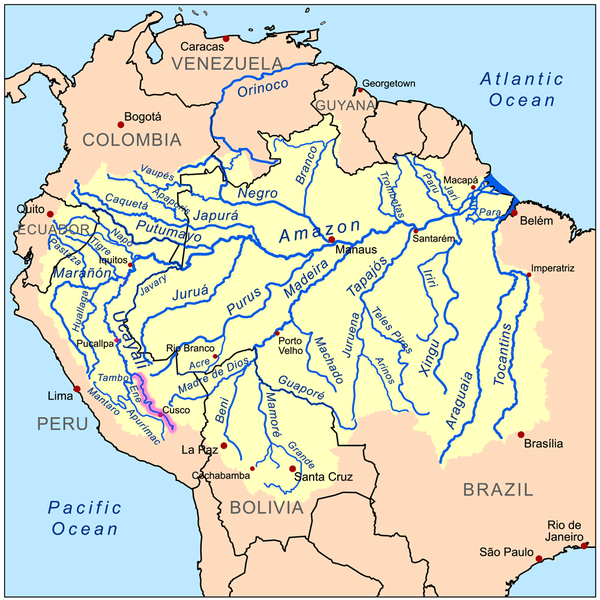
Map depicting the Amazon Basin with the Urubamba River highlighted.
